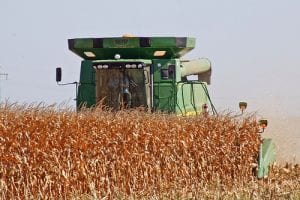Source: Mark Sulc, Peter Thomison, Bill Weiss, OSU
 Silage harvest has begun in some parts of Ohio. Proper harvest timing is critical because it ensures the proper dry matter (DM) concentration required for high quality preservation, which in turn results in good animal performance and lower feed costs. The proper DM concentration is the same whether it is a beautiful, record breaking corn crop or a severely drought stressed field with short plants containing no ears.
Silage harvest has begun in some parts of Ohio. Proper harvest timing is critical because it ensures the proper dry matter (DM) concentration required for high quality preservation, which in turn results in good animal performance and lower feed costs. The proper DM concentration is the same whether it is a beautiful, record breaking corn crop or a severely drought stressed field with short plants containing no ears.
The recommended ranges for silage DM are:
Bunker: 30 to 35%
Upright: 32 to 38%
Sealed upright 35 to 40%
Bag: 32 to 40%
Chopping corn silage at the wrong DM concentration will increase fermentation losses and reduce the nutrient value of the silage. Harvesting corn too wet (low DM concentration) results in souring, seepage, and storage losses of the silage with reduced animal intake. Harvesting too dry (high DM concentration) promotes mold because the silage cannot be adequately packed to exclude oxygen. Harvesting too dry also results in lower energy concentrations and reduced protein digestibility.
Corn silage that is too dry is almost always worse than corn silage that is slightly too wet. So if you are uncertain about the DM content, it is usually better to err on chopping a little early rather than a little late. Follow the guidelines below to be more confident in your moisture assessment.
Kernel stage not a reliable guide for timing silage harvest
Dry matter content of whole plant corn varies with maturity. Research has shown that the position of the kernel milk-line is NOT a reliable indicator alone for determining harvest timing. Geographic location, planting date, hybrid selection, and weather conditions affect the relationship between kernel milk-line position and whole plant DM content. In a Wisconsin study, 82% of the hybrids tested exhibited a poor relationship between kernel milk-line stage and whole-plant % DM. In Ohio we have seen considerable variation in plant DM content within a given kernel milk-line stage.
Appearance of the kernels should only be used as a guide of when to begin sampling for DM content, see section below When to Begin Field Sampling.
Determining silage moisture









